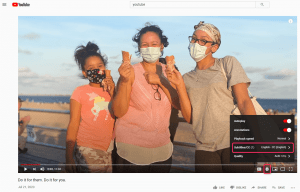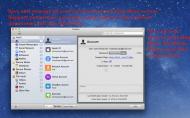

- Configure ccmenu how to#
- Configure ccmenu for mac#
- Configure ccmenu install#
- Configure ccmenu full#
- Configure ccmenu code#
buildnotify is configured through its own GUI, accessed by right clicking. CCMenu displays the build status of projects on a continuous integration server as an item in the Macs menu bar. Load each plist into launchd using launchctl. It was largely inspired from CCMenu and lets you monitor multiple continuous.

Configure ccmenu how to#
See the Starting on Login section above for an example of how to check directories and permissions. Once you've edited your plist/s with your custom config, make sure that all the referenced paths exist and have the correct permissions. Make as many copies of the plist as you require, one per configuration, ensuring that each has a unique label.

If you installed with the Linux script, you can take a copy of the template plist from the Agent's GitHub repository. If you installed the agent with Homebrew you can find the plist in your user's ~/Library/LaunchAgents directory. If your agents each need different configuration, you can create multiple launchd services:įind your agent's plist. ProgramArguments /Users/your-build-user/.buildkite-agent/bin/buildkite-agent start -spawn=5 The below example will start five agents each time the service is started: Using the existing agent plist, add the spawn flag to the ProgramArguments and change the number to how many agents you want to run. If you need the same configuration on each agent, either configure the launchd service to use the -spawn flag on the buildkite-agent, or the spawn setting in the buildkite-agent.cfg file. Launching and managing multiple agents can be done using launchd. Launchctl load ~/Library/LaunchAgents/ Running multiple agents Troubleshooting: launchctl fails with "Could not find domain for"Įnsure that you have a user logged in to the macOS host, then re-run: # Check the logs tail -f ~/.buildkite-agent/log/buildkite-agent.log # Create the agent's log directory with the correct permissions mkdir -p ~/.buildkite-agent/log & sudo chmod 775 ~/.buildkite-agent/log
Configure ccmenu full#
# Set buildkite-agent to be run as the current user (a full user, created using System Prefs) sed -i '' "s/your-build-user/ $( whoami ) /g" ~/Library/LaunchAgents/ # Download the launchd config to ~/Library/LaunchAgents/Ĭurl -o ~/Library/LaunchAgents/
Configure ccmenu install#
If you installed the agent using Homebrew you can run the following command to get instructions on how to install the correct plist and have buildkite-agent start on login: On macOS, the Buildkite agent runs as the user who started the launchd service. See the configuration documentation for an explanation of each configuration setting.

Configure ccmenu for mac#
The typical paths for Mac computers with Intel processors are: In the Configuration Manager console, go to the Assets and Compliance workspace.
Configure ccmenu code#


 0 kommentar(er)
0 kommentar(er)
